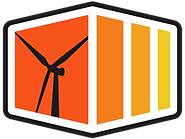
CONVENIENCE.
CARE.
COMPLIANCE.

Wind-Fare was founded by a safety professional with a simple mission: to close the persistent gap in welfare provision during the construction and maintenance of renewable energy projects.
Our first focus is consultancy: helping clients understand their legal obligations and benchmark against industry expectations. We provide structured gap analysis of welfare provision, and we deliver ALARP (As Low As Reasonably Practicable) determinations that give developers, owners, operators, and contractors a defensible position when engaging with regulators, auditors, or investors.
Building on this expertise, we also deliver containerised welfare units that comply with CDM 2015 and the Workplace (Health, Safety and Welfare) Regulations. Every unit is designed in line with HSE Approved Codes of Practice and industry guidance, available in multiple sizes and fully customisable—from specialist storage and emergency refuge to pull-out beds.
For too long, welfare at remote assets has been treated as a secondary consideration, with reliance placed on vessels, lengthy drives to facilities, or “informal” methods of relief. At Wind-Fare, we believe this mindset must change. Welfare is not a logistical burden or an unnecessary capital expense. It is a legal requirement, a driver of safety, productivity, and workforce retention—and above all, a moral imperative. Every worker deserves dignity and timely access to welfare facilities.
Wind-Fare exists to help the renewables sector uphold and exceed its obligations—to design, plan, and maintain working environments where welfare is never compromised. Whether through consultancy, compliance support, or physical welfare solutions, we bring convenience, care, and compliance to a space that demands all three.
By raising the standard for welfare in renewables, we are not only supporting better projects—we are safeguarding the dignity, health, and wellbeing of the very people who power the energy transition.
